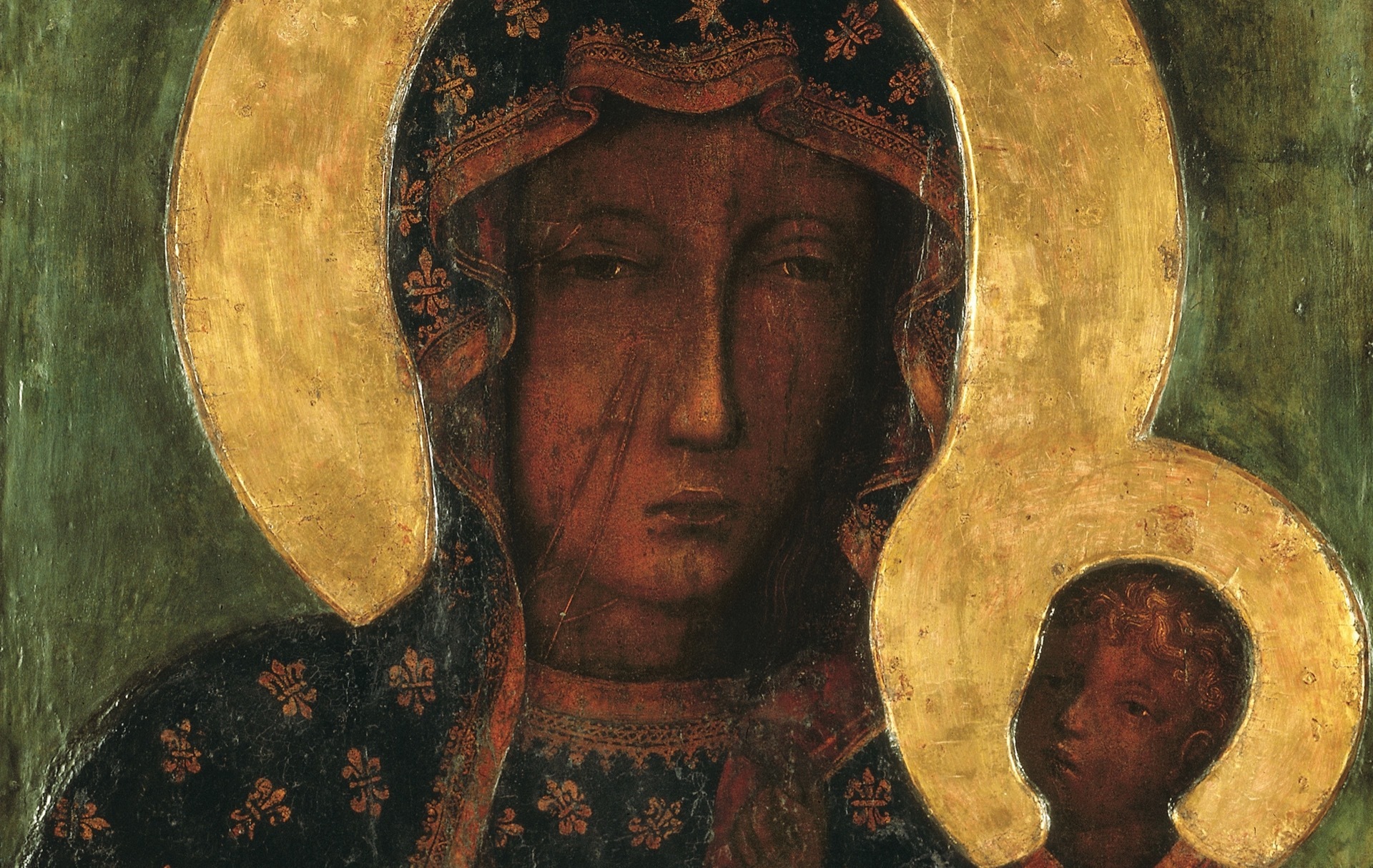This is translated from Polish that appeared on ppr.pl and was titled ‘Chciał zniszczyć obraz Matki Boskiej Częstochowskiej’
A 58-year-old man, an inhabitant of Świdnica (Lower Silesian voivodship), attempted to destroy the miraculous image of Our Lady at Jasna Góra in Częstochowa this morning. He was stopped in time by the Jasna Góra guard.
– The Miraculous Image of Our Lady of Czestochowa was not harmed in any way during this morning’s incident. Still, the faithful are impacted, said Fr Robert Jasiulewicz, a spokesman for Jasna Gora.
According to Częstochowa police spokeswoman Joanna Lazar, at around 8 a.m., a 58-year-old man probably threw light bulbs filled with black paint in the direction of the famous image. He had probably already arrived in Częstochowa with this intention. Thanks to the protective glass, the image was not harmed.
The Jasna Góra guard immediately detained the man, who handed him over to the police. Sub-Inspector Lazar added that the 58-year-old is likely to answer for “public insult to a place of religious reverence”, which carries a maximum of two years imprisonment.
His sanity is likely to be tested during the proceedings. However, Lazar did not want to reveal details of the man’s explanations during the interrogation, which is still ongoing.
“They call us with tears in their eyes”.
– The faithful call us in tears, asking what has happened. We reassure them that the painting is whole, undamaged in any way,” said Fr Jasiulewicz.
He acknowledged that the incident had also moved the monks, who had gathered for prayer. The bishops of Częstochowa also arrived at the scene. After the incident, the Chapel of the Miraculous Picture was closed. It was reopened to the faithful on Sunday morning, after which supplications and prayers of reparation were said.
In a statement issued before noon, Father Roman Majewski, Prior of Jasna Góra, informed that the perpetrator had tried to destroy the Miraculous Picture of the Queen of Poland “by pouring a black substance on it”. – Together with the bishops of Częstochowa, the Pauline fathers and brothers said prayers of expiation. We ask everyone to join in this prayer,” the Prior appealed.
History of the image of the Black Madonna
The Jasna Gora image of the Mother of God is one of the most famous images to be found in Poland. The miraculous image of the Mother of God was brought to Jasna Góra in 1382. Opinions about its origin are divergent. According to some sources, the author of the painting was supposed to be St. Luke the Evangelist, who is said to have painted it on the boards of the table at which the Holy Family ate. However, research points to a 13th-14th century origin of the painting.
The icon depicts the Blessed Virgin Mary holding the infant Jesus in her arms. Our Lady’s right cheek is marked by two parallel cuts, crossed by a third on the line of the nose. In addition, six cuts are visible on her neck. These are the remains of an attack on the monastery in 1430.
After breaking into the Chapel of Our Lady, a gang of robbers from Bohemia, Moravia and Silesia removed the painting from the altar, robbed it of valuables and cut the Madonna’s face with sabres. The wooden base of the painting was thrown on the floor and broken into three pieces.
After this attack and the subsequent restoration of the icon, the popularity of the Jasna Gora shrine increased. Confirmation of the favours received by the faithful through the mediation of the Mother of God is the numerous votive offerings left at Jasna Góra and the development of this place of worship.
Stimulates reflection and prompts prayer
The image of Our Lady of Jasna Gora is among the icons described as hodegetria, which means ‘she who leads’. It depicts Mary, the Mother of God, with the infant Jesus, the Son of God and her Son. In this context, it renders a biblical event intended to stimulate reflection and prompt prayer.
“The ancient image, which bears the marks of Christianity in the East and the West, is a sign of the unity of these two worlds, riches and cultures, which through Holy Baptism have met and united in Christ,” – this is what John Paul II said about the Jasna Gora icon during his visit to the shrine in 1991.

